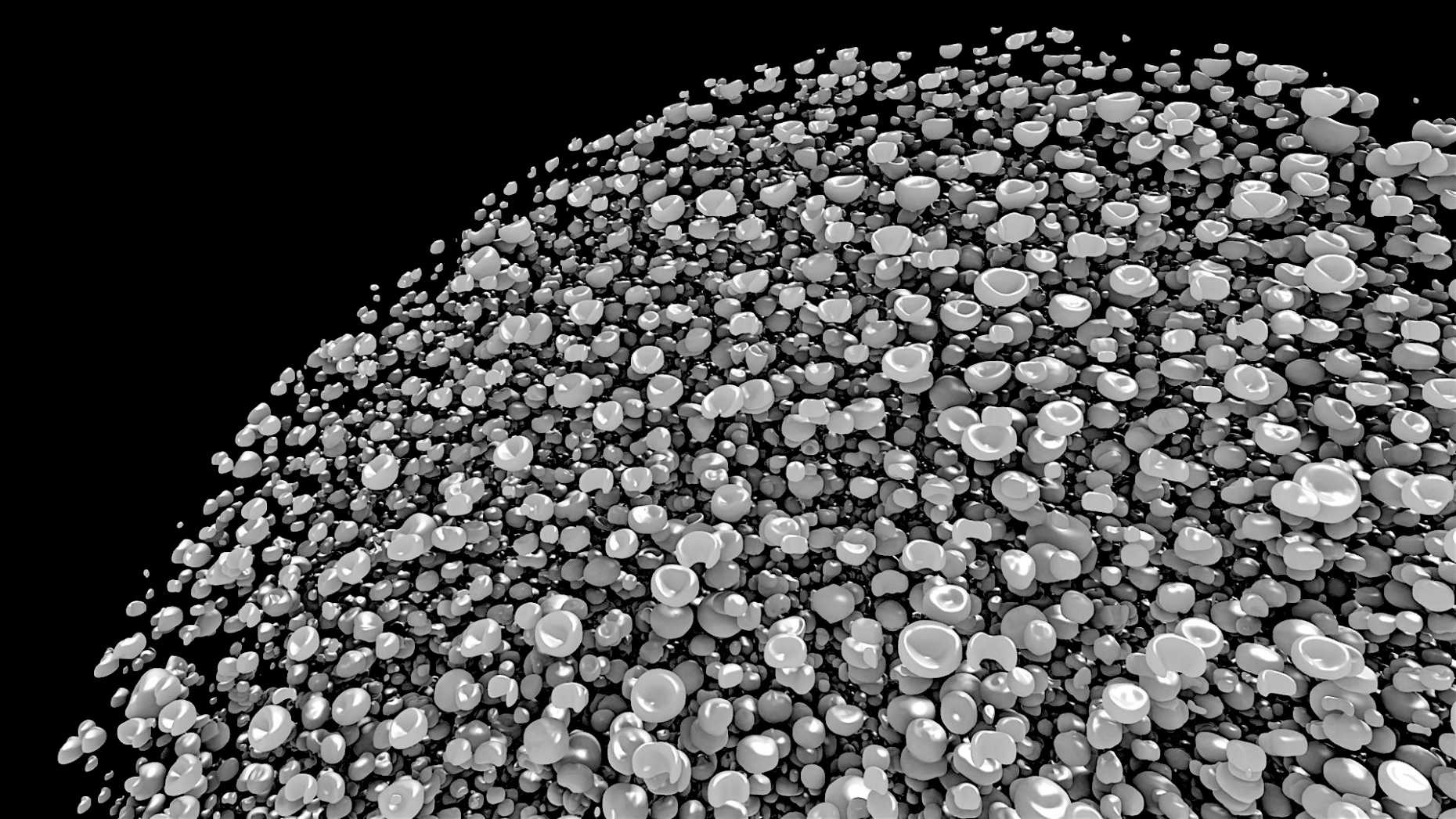Large-Scale Simulation of Cloud Cavitation Collapse
Reduction in CO2 emission of internal combustion engines is of paramount importance. Efficient combustion requires precise liquid fuel injection control and enhanced fuel-air mixing. This implies high injection pressures which cause undesired cavitation phenomena. Simulations of cloud cavitation collapse are performed to gain detailed insights into this deleterious process.
Cavitation, encountered in liquid flows subject to large pressure variations, refers to the rapid growth of vapor nuclei followed by an intense collapse of the resulting vapor pockets. This process is known for its detrimental impact onto, for instance, fuel injectors and hydroelectric turbines. The provoked effects comprise material erosion, noise and vibrations and thus limit the lifetime of the affected device.
To understand the involved mechanisms, cloud cavitation collapse, i.e., the collapse of clusters of vapor bubbles formed under the aforementioned flow conditions, is investigated by numerical simulation. Configurations with tens of thousands resolved bubbles are considered. First, the bubbles at the outer surface of the cloud start to collapse, accompanied by the formation of micro jets due to bubble-bubble interactions. These interactions come along with notable deformations of the bubbles leading to cap-like shapes. The combined effect of individual collapsing bubbles leads to the formation of an inward-propagating pressure wave and velocity front. The pressure wave and the velocity front continuously increase in strength while moving towards the core of the cloud. As a result, significant pressure amplifications are observed in the core region, which play a crucial role in cavitation-induced damage.
Further project information is available from the CSElab homepage.
The ESC Member involved in this project is Professor Petros Koumoutsakos, Chair for Computational Science, Fellow of the Collegium Helveticum.
Advances in Computer Science and Mathematics provide us today with an unprecedented potential for scientific discovery and technological innovation. Computational Science integrates these advances to enable the predictive simulation, analysis and optimization of real world problems. Research in the Chair of Computational Science is at the interface of Simulation and Data Sciences with emphasis on applications in Engineering, Medicine and Nanotechnology.
